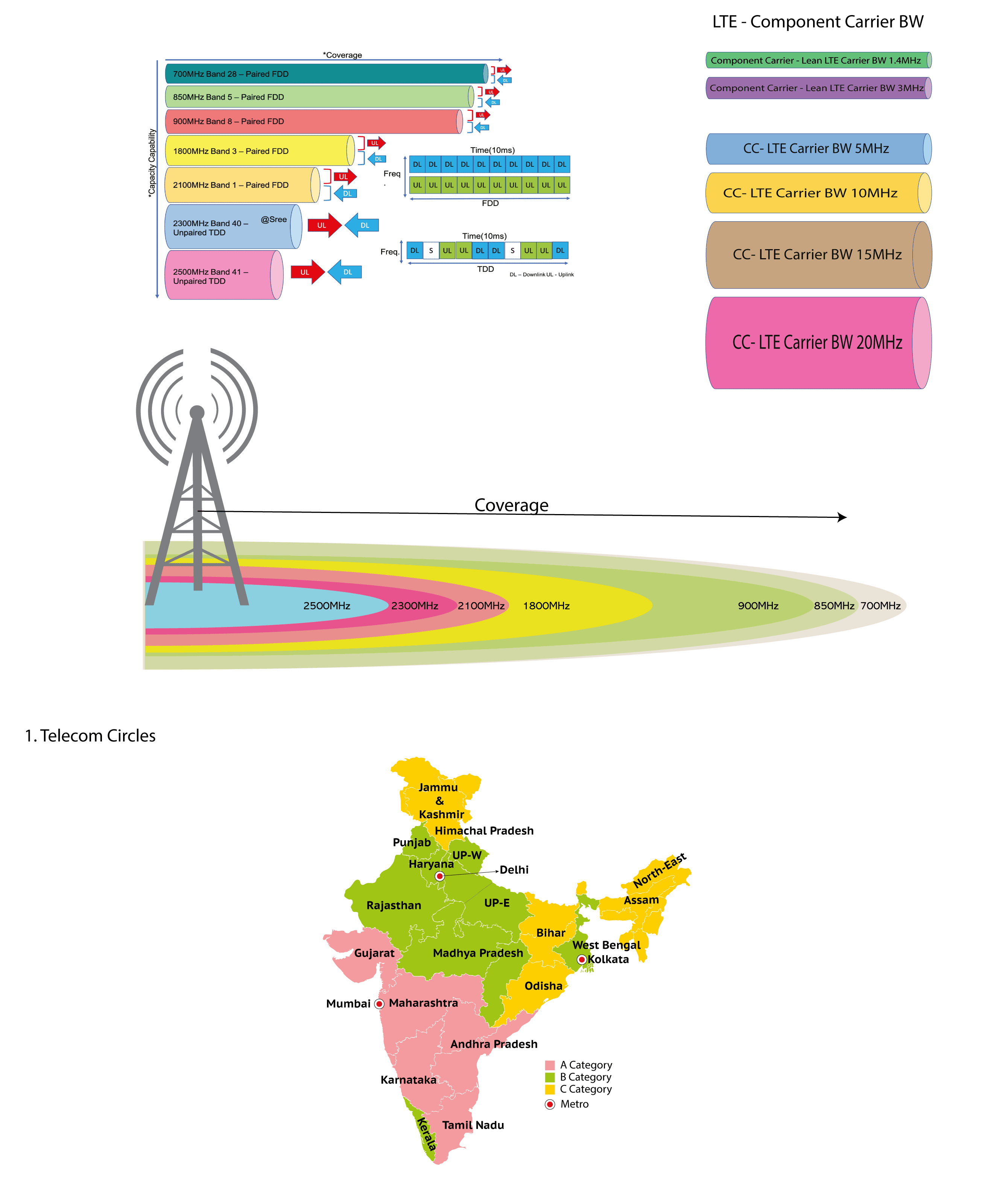India Spectrum Holding Timeline 2024
‘Spectrum’ relates to the radio waves for communication over the airwaves. Here, on this page, we focus only on radio frequencies allocated to the ‘mobile industry’ in India. Spectrum is a very crucial resource which has enormous potential for all-round development of a country from communication to socio-economic development. So, telcos’ spectrum requirements vary according to usage demand and technology landscape. Government regulators in India (WPC/TRAI/DOT) monitor the spectrum usage, allocations and conduct auctions for spectrum in such a manner to create and nurture conditions for the growth of telecommunications in the country. In India 600 MHz, 700 MHz, 800 MHz, 900 MHz, 1800 MHz, 2100 MHz, 2300 MHz, 2500 MHz, 3300 MHz, 26 GHz bands are currently in use for mobile services.
Update Notes:
Point 1: To those who have been following this page – we know there is a delay, but unavoidable. Approximately a year back, we’ve recovered a major technical failure (lasted for months) which hindered our actual update plans we had when we crafted these first of its kind maps. But since then, there are a lot of changes in the telecom space whose updates were not applied to the infographics due to various reasons. Also, we felt this isn’t the right time to update the maps considering the human hours involved when there is a lot of uncertainty around. So, now we just tried to make things simpler via the excel.
Point 2: We are curating the sheet with lots of love and passion so that you don’t even feel the need for maps.
Point 3: Spectrum Maps > Spectrum Timeline
— Cont.
Related Articles:
- 2021 Spectrum Auction Details That You Shouldn’t Miss
Understanding the Configuration of Spectrum Put for Auction in 2021
Component Carrier: We come across telcos generally stating ‘We have added a new 4G carrier on so and so band. Refarmed so and so bands for a new 4G carrier.‘ What do all these mean? This means the telco has managed to create a carrier from its spectrum portfolio with any of the mentioned Component Carrier BW configurations i.e. 1.4, 3, 5, 10, 15, 20MHz on a band to provision LTE services.
I have selectively chosen the maps’ colour schemes along with the details represented by the maps for visual appeal and ease of understanding. Colour or opacity is varied in some maps to highlight spectrum variations.

Notes:
1. For understanding: 1MHz of 700MHz spectrum supports the same amount of data as 1MHz of 2500MHz spectrum, but one slice of radio spectrum isn’t the same as other as different spectrum bands have different characteristics. Low-frequency transmissions i.e. sub GHz bands can travel greater distances and hence more coverage. Less data can be transmitted over low-frequency waves. Higher-frequency transmissions carry more data but cannot travel greater distances. Networks with higher capacity generally support higher speeds. For ease of understanding, the same phenomenon is represented using the concept of ‘Pipes‘ through the infographic in a layman way and may not depict all the concepts of the underlying technologies.
2. Administratively assigned spectrum is un-liberalised Spectrum. Spectrum assigned through auctions is liberalised Spectrum. Un-liberalised spectrum can be converted to liberalised by paying market-determined price prorated for the balance license period.
a. Un-Liberalised Spectrum: Defined technology, Defined Services, Slow to respond to market
b. Liberalised Spectrum: Any Technology, Any Services, Innovation friendly